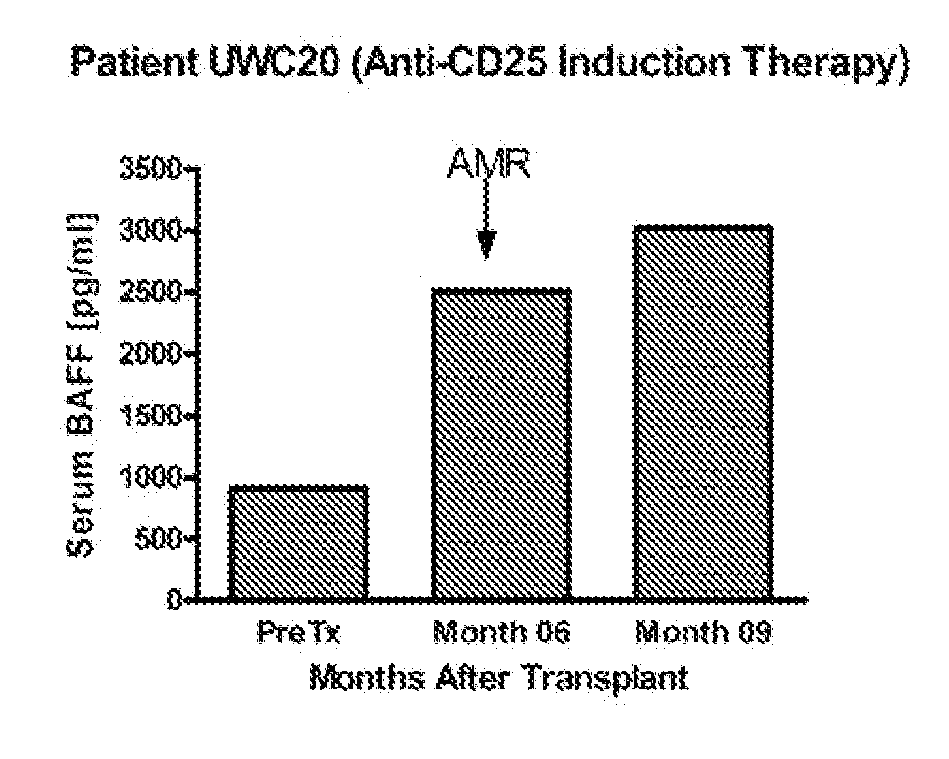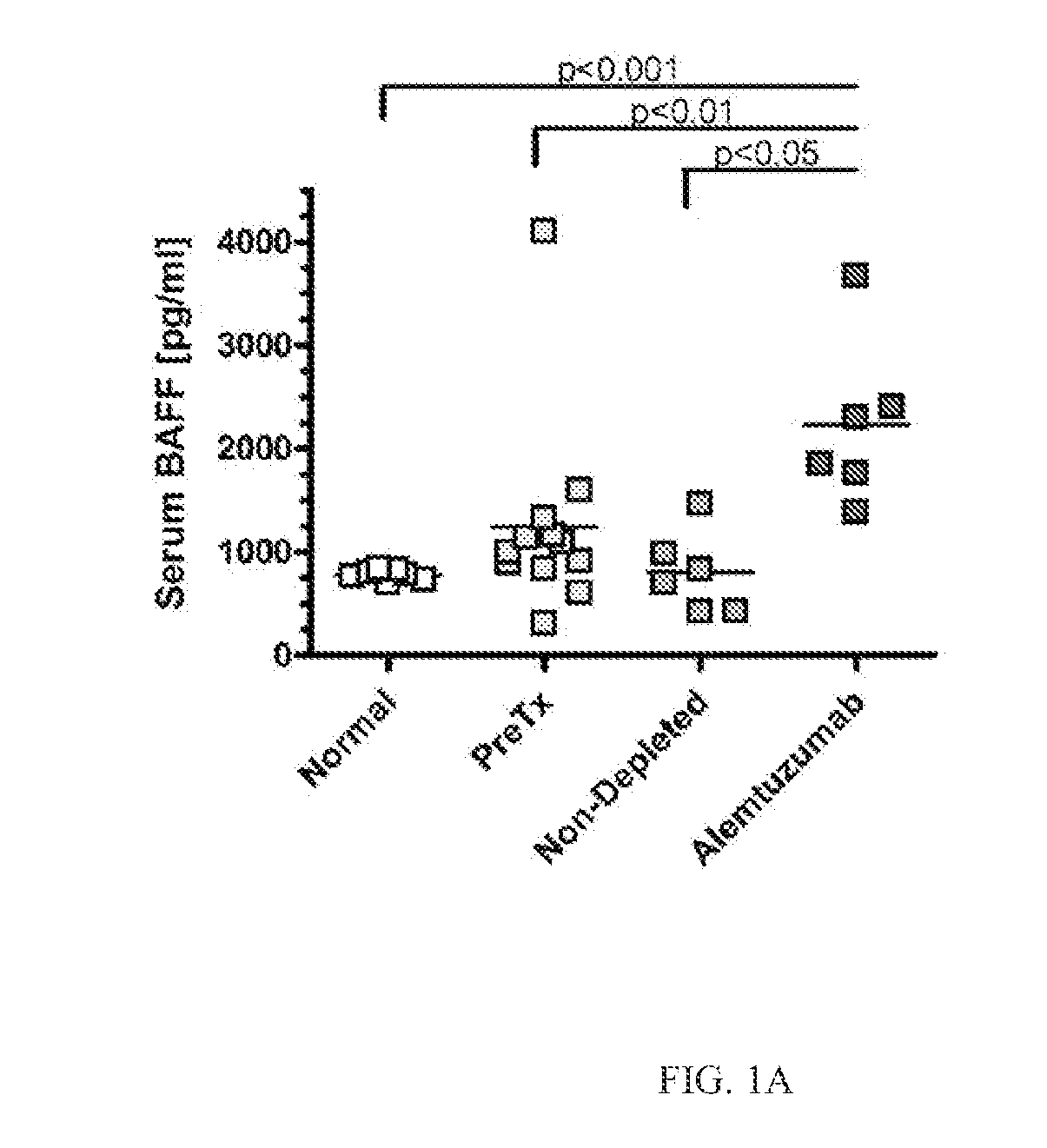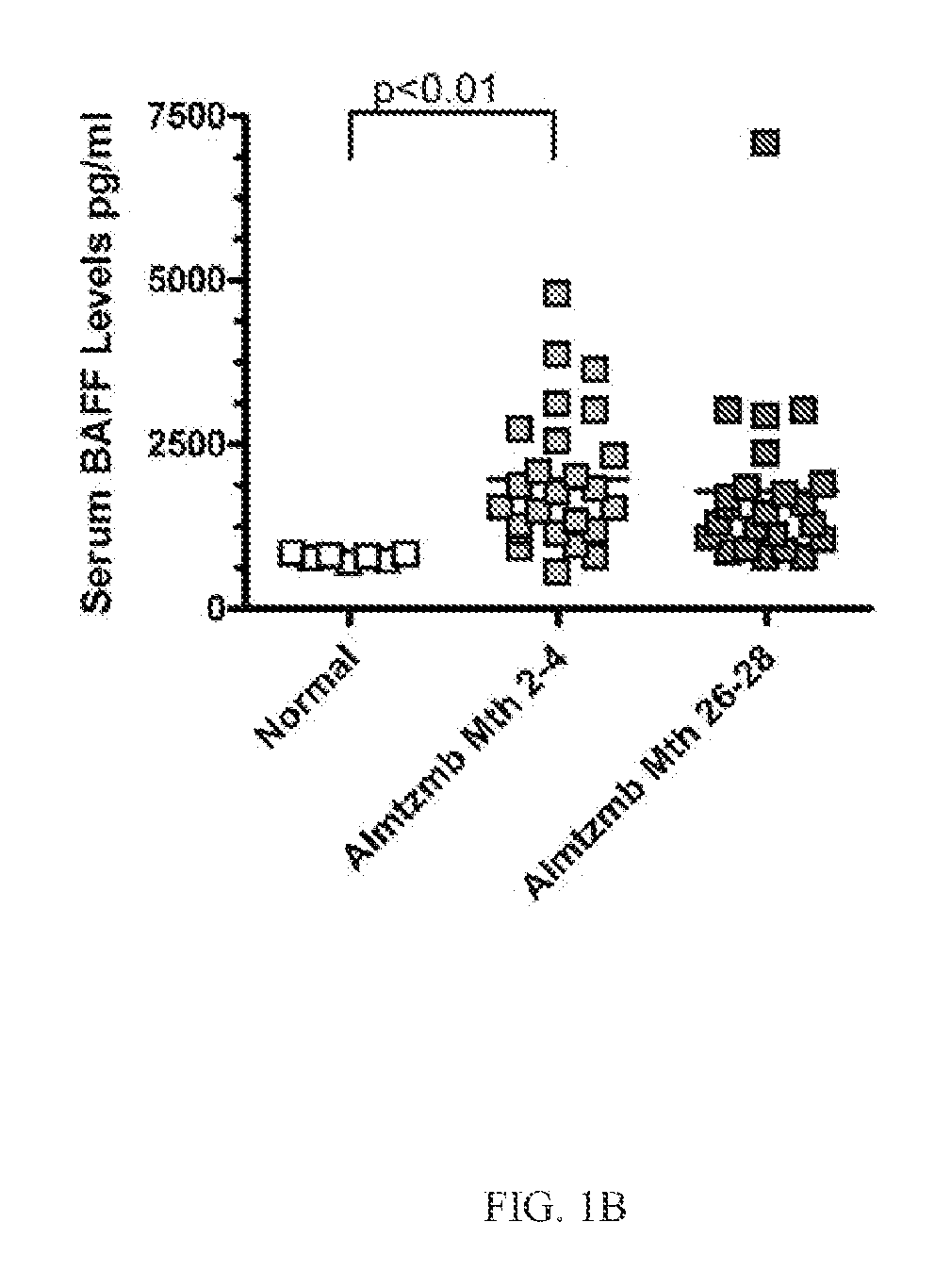Detection of b-cell activating factor as a biomarker for antibody mediated rejection in transplant recipients
a technology of b-cell activating factor and antibody mediated rejection, which is applied in the field of cell biology, can solve the problems of difficult to fully remove therapeutically, poor long-term maintenance of grafts, and increased risk of allograft sensitization of patients, and achieves the effect of reducing the likelihood of a long-term allograft success
- Summary
- Abstract
- Description
- Claims
- Application Information
AI Technical Summary
Benefits of technology
Problems solved by technology
Method used
Image
Examples
example 1
[0120]Kidney transplantation is the primary therapy for individuals with end stage renal disease. However, the lives of allograft recipients are by no means carefree. Receiving an allograft comes with the lifetime burden of taking immunosuppressive drugs with full knowledge that these drugs do not guarantee freedom from graft rejection. While acute rejection rates have decreased in recent decades, the sobering problem of antibody-mediated rejection (AMR) persists. The generation of donor specific antibody (DSA) initiates events that result in AMR and underlies immune sensitization to the donor kidney. The often necessary therapeutic removal of alloantibody and allospecific B cells in sensitized patients is expensive and inefficient. Furthermore, sensitized patients frequently lose their graft, requiring a second transplant which is limited by a reduced donor pool and met with even higher rejection rates.
[0121]Serum samples from individuals who had received a kidney transplant were a...
example 2
[0159]The utility of detecting BAFF and monitoring, detecting, predicting AMR were investigated. Urine is often a desirable specimen due to the ease of handling, ease of obtaining, and the ease of shipping. In addition, urine is often free from pathogens, which greatly reduces the risk of exposure to infectious agents. Therefore, urine samples were analyzed for the ability to detect BAFF.
[0160]Methods
[0161]Sample Collection
[0162]Urine was collected from renal transplant patients during scheduled clinical visits at various times post-transplant. All samples were collected according to approved IRB protocols. All patients in the study had been given a 30 mg dose of alemtuzumab on or before the day of transplant. In the laboratory, urine was centrifuged for 10 minutes at 1200 rpm. Urine supernatants were then aliquoted and frozen at −20 degrees long term.
[0163]ELISA
[0164]At the time of analysis, urine aliquots were brought to room temperature. Using a BAFF / BLys Sandwich ELISA (Quantiki...
PUM
 Login to View More
Login to View More Abstract
Description
Claims
Application Information
 Login to View More
Login to View More - R&D
- Intellectual Property
- Life Sciences
- Materials
- Tech Scout
- Unparalleled Data Quality
- Higher Quality Content
- 60% Fewer Hallucinations
Browse by: Latest US Patents, China's latest patents, Technical Efficacy Thesaurus, Application Domain, Technology Topic, Popular Technical Reports.
© 2025 PatSnap. All rights reserved.Legal|Privacy policy|Modern Slavery Act Transparency Statement|Sitemap|About US| Contact US: help@patsnap.com



